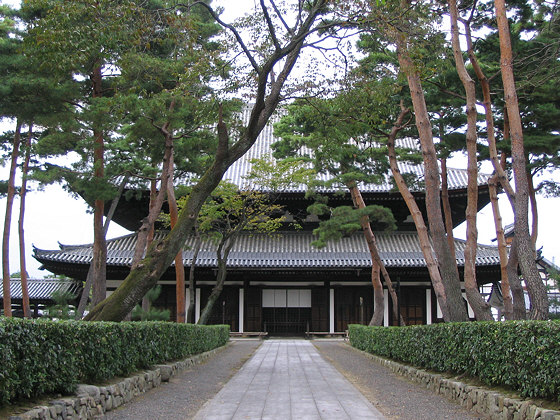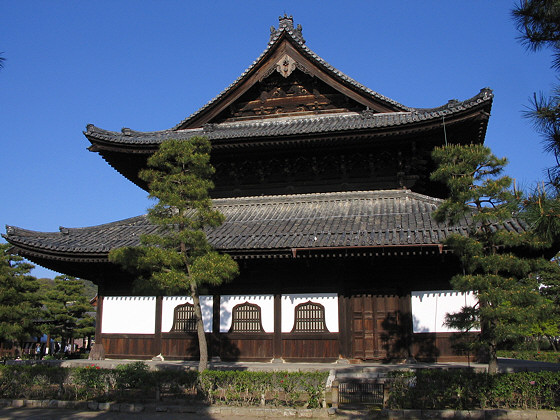ror Go-Daigo's death, for a memorial service to his former friend. It has been destroyed and rebuilt several times, and the current temple dates to the Meiji
period. During the Muromachi Period, it was the most important
Zen temple in Japan.
The second temple, Shokoku-ji, was founded in 1382 by Ashikaga Takauji's grandson Yoshimitsu. It is a major center of Zen Buddhism in Japan, and both Kinkaku-ji and Ginkaku-ji are affiliated with this temple. Even after the Muromachi period, many Japanese leaders, such as Toyotomi Hidyoshi and Tokugawa Ieyasu, supported the temple.
The third temple, Kennin-ji, was founded in 1202. It is believed to be the oldest Zen temple in Kyoto. It contains notable artwork, including a painting of Fuujin and Raijin, the gods of wind and thunder.
The fourth temple, Tofuku-ji, was founded in 1236 by the imperial . It was built to resemble the Buddhist temples Todai-ji and Kofuku-ji in Nara. It was burned down in the 15th Century, but was rebuilt. The main gate is the oldest Zen gate in Japan.
Website: http://www.tofukuji.jp/english.html
The fifth temple, Manju-ji, was founded in the late 13th Century. It contains a noteworthy figure of the Amida Buddha, as well as esoteric art about the life of Siddartha Gautama.
Collectively, these temples demonstrate the role of religion in the government in feudal Japan.
BACK TO HISTORICAL PLACES TO VISIT INDEX
Comment on what you could learn related to what you have studied about Edo and Meiji Japan.
Comment on what you could learn related to what you have studied about Edo and Meiji Japan.







